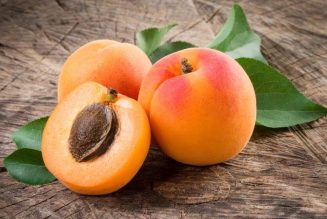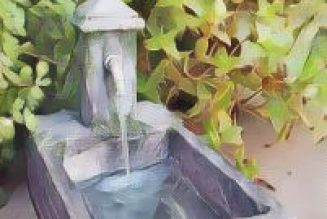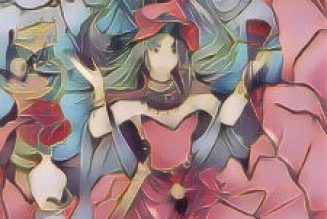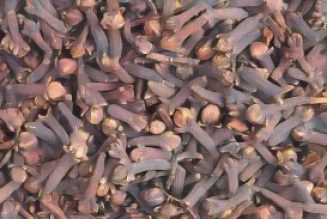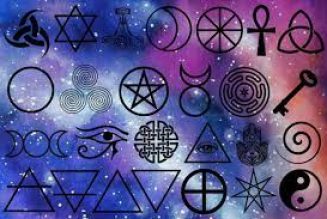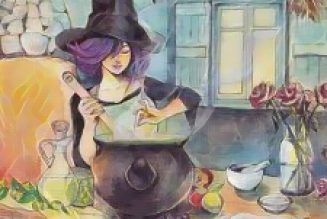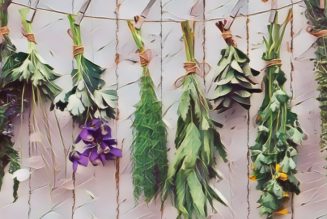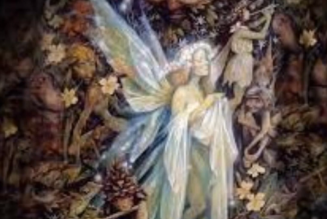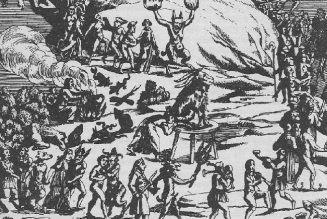Gods. Fairies. Elves. Ancestors. The deeper we go into our pagan history, the more we see a blurring of the lines between the spirits. In fact, many of the sagas, legends, and lore point to the idea that our pagan gods, and the beings we call fairies and elves, might have once been living, breathing human beings. And therefore, our ancestors.
Ancestors OR Gods? Which is it?
I’ve recently been exploring the idea that our gods and fairies were once our ancestors. That our labels for the gods and the other spirit races like the fae stems from a deep-seated belief in our ancestors and ancestor worship. And that many of our “gods” and what we know as fairies today were actually living, breathing human beings like us at one time.
In the Celtic and Germanic traditions, the lines between spirits are blurry at best. You’d think the more you read and research the clearer these beings’ nature would become. But in fact, it becomes more complex and muddy. And the legends point to the idea that these three – gods, faeries, ancestors – are all one-in-the-same.
My thought process is – all of these spirits arose from the same place and somewhere down the line someone started separating the three via personal lore. But, at one time, everyone followed a more ancestral type of belief system which is where the gods and fae originate. Essentially, if we strip away the titles and words that we as humans have put on these beings, do they come closer to being the same thing? Or not?
Odin as Man and Ancestor
It is possible that a person named Odin lived an actual human life in ancient times. This is even mentioned in the Sagas, that Odin was a real king from somewhere in Eastern Europe or possibly the Middle East, who migrated to Northern Europe and conquered many peoples. Because of his legendary status, and because of a strong ancestral religious system, the people ended up deifying their ancestor, a.k.a. the King Odin. Many Germanic royal bloodlines claim Odin as their divine ancestor, even to this day. In the myths, Odin creates man and woman from driftwood then breathes life into them. And we call him the Allfather.
From the Ynglinga Saga, Verse 2:
“The country east of the Tanaquisl in Asia was called Asaland, or Asaheim, and the chief city in that land was called Asgaard. In that city was a chief called Odin, and it was a great place for sacrifice. ………….Odin was a great and very far-travelled warrior, who conquered many kingdoms, and so successful was he that in every battle the victory was on his side. It was the belief of his people that victory belonged to him in every battle.
It was his custom when he sent his men into battle, or on any expedition, that he first laid his hand upon their heads, and called down a blessing upon them; and then they believed their undertaking would be successful. His people also were accustomed, whenever they fell into danger by land or sea, to call upon his name; and they thought that always they got comfort and aid by it, for where he was they thought help was near.”
Freyr as Ancestor, God, and Elf
A great representation of the blurred lines between gods ancestors and the elven beings is the Norse God Freyr. Freyr is considered an ancestor to the Ynglings, a royal bloodline of Old Sweden. In addition, the Eddas written by Sturluson in the 12th century, depict Freyr as a god AND as a King of Alfheim…or Elf Home.
Linda Raedisch explores the idea of Freyr, an earthly god and Elf, being even older than the worship of Odin arising from the Nordic Bronze Age. Then when the Aesir (sky gods) took over as the main Norse pantheon, Odin and Thor grew in popularity, washing out the older earthly gods. Yet Freyr’s veneration continued, even at the Temple of Uppsala in Sweden during the Christianization of Scandinavia. So his name was just as powerful as Odin and Thor.
Elves as Ancestors and Gods
The words Elf, Alf, Alfar have Germanic origins and are related to Alba and Alb in Proto-Germanic, translating to Light or Brilliant.
Many names in the Middle Ages stem from words that meant Elf or Elven, and some we still use today. Albert, Alfred, Aubrey, Avery, Alvin, Alfric (and if you’d like to hear Medieval names that mean elf just watch The Last Kingdom, there’s a dozen or more of them – Alfric, Alfred, Aethelfled, Alfwyn, etc.) These names were particularly common with royalty.
In modern Norse paganism, the Alfar are our ancient, elevated male ancestors and the Disir are ancient ancestral goddesses or elevated female ancestors. In addition, these beings are considered of the Elven race. Each Norse Germanic family and individual has its own Alfar and Disir guiding and protecting them from the Other side. Though don’t get it twisted – the alfar AND the disir could be downright vicious, particularly the Disir of whom required sacrifices.
There’s a story about how during the Christianization of Scandinavia, a man in one family decided they wouldn’t sacrifice someone for their Disir at Disablot, and instead would sacrifice a bull. The Disir came down from the mountain in the distance, wearing black hooded cloaks, knocked on the door, the man answered the door and they un-alived him and left.
The Disir are guardians of the bloodline, can grant prosperity, but also control the fate of the individual. They are likened to the Norns of whom control the destiny of the Universe. In fact, we could say the Norns are the Disir of the gods and the Universe. Interestingly, the Norns are often described with different names and being different entities including goddesses, ancestors, and even trolls.
The Practice of “Sitting Out”, Utesitta
There is a sacred practice in Norse tradition where the individual would seek guidance or visions by sitting on top of a mound, which was often a burial mound of an ancestor. But it’s also mentioned as seeking guidance from the Alfar and the gods.
To quote Linda Raedisch in her brilliant book The Old Magic of Christmas, “the ancient Scandinavians regarded the Alfar as a distinct class of beings, though there is some fluidity among the bloodlines of elves, gods, norns, and even humans.” she also goes on to say “if the elves resemble us, it is because they are us, or rather, were. The human who stumbles upon a procession of elves or an impromptu elvish feast is often startled to recognize someone he knows among them: someone who has died either recently or years before. The elves, then, are the dead – not the quietly resting dead but those who, for whatever reason, have taken up new lives on the other side of the veil and at times might come strolling back through it.”
Alfablot and Disablot
First, I’ve written an entire blog post on Alfablot its origins and how to celebrate. I’ve also written a blog post on Disablot. ( Which you can find in our guide section ) Alfablot is essentially the elven blot or sacrifice, often taking place during the Winter Nights or the end of Autumn leading up to the Winter Solstice. This was practiced in Sweden, we know for sure, and the Disablot is the Disir blot or sacrifice which also takes place during Winter Nights. There is another disablot called the Disting that occurs in February too. All during a time when ancestors and elves were both “active” in later lore.
Fairies and Ancestors in Celtic Lore
Now let’s travel to the Celtic lands and notice all of the similarities between their gods and faeries and the Norse gods and elves. In fact, our good friend Linda Raedisch often comments in her books about the resemblances between the two peoples and how they likely arise from the same peoples if we go back far enough.
Mounds are the Tombs of Our Ancestors:
We have a similar theme here in the Celtic lands as in the Norse, where ancestors are buried in the earth, often in mounds, of which later on become the dwelling place of the Fae or Tuatha. I.e. portals to Elfhame or the Elf-land.
For example, Knockma Hill in Galway, Ireland is notably an ancient world site. Scholars say just as important to world history as Stonehenge or Newgrange yet not as widely recognized. And it is a hill that’s been used for thousands of years (it’s older than the pyramids) as a ceremonial burial ground. Where it gets interesting is that, in addition to being a burial place for the dead, later on in Celtic lore it also became a place of the Fae. Specifically the Elven King Finvarra, also called the KING OF THE DEAD, makes his home in this hill. King Finnvara is known to have liked the human ladies as lovers and even tried stealing a local one to make his wife.
Here we start seeing the idea of fae and elves as ancestors and as interbreeding with humans. In addition, in the same hill, there are at least 5 ancient cairns…one of which MIGHT be the cairn of Queen Medb (Maeve) who is a legendary Queen of Ireland who would eventually morph into a Fairy Queen in later lore. Again, a potentially real person buried in a mound becomes a Fairy Queen later on. In addition, she is considered a divine ancestor or mother of certain Irish lines.
The Celtic Otherworld and Afterlife: Tir na N’og
The faeries and Tuatha are said to live in the Celtic otherworld, right? Well, the old stories and lore also said that when people died, their souls might go to the Otherworld, as well. Tir na N’og being one example, which translates to the “Land of Youth”and is featured famously in the tales of Oisin and Niamh. There are other names for this seemingly same place including Mag Mell (Plain of Delight) and Emain Ablach (Isle of Apple Trees).
The Tuatha de Dannan live in Tir na N’og and are featured in many old Irish myths called the Immramm (voyage) tales. These heroes who reach this otherworld do so through entering ancient mounds, travel across the sea to the farthest unknown places, go down under the water, or go through the mist to reach it. And there they might meet the Tuatha, the gods, and their ancestors.
Manannan Mac Lir is the ruler of Tir na N’og, a sea god of Celtic lore, the first ancestor of the human race and the KING OF THE DEAD.
Celtic Fairy Queens, Goddesses, and Heroes as Divine Ancestors
There are ancient families and septs/clans of Celtic Irish folk who claim descent from many of their legendary heroes, gods, goddesses, and faery queens. If you have Irish ancestry, you might find your family is one of them.
The idea of royal lines claiming descent from gods/divine beings is nothing new and isn’t solely Norse or Celtic but spans cultures. The Ancient Egyptians, for example. Here I should state again, is this because these “gods” were actually real people at one point and became deified ancestors? I believe it’s highly likely.
The Medieval Irish sept called the Dairine (stemming from the Corca Dhuibne pronounced way-nah) claims descent from the Cailleach, a goddess/hag but also from Danu.
And the Dal Cais (Dal-cash), originally the Deisi people, claim descent from Flidais (Flee-aysh) a goddess/fairy queen.
Lugh is a Celtic god who is also part of the Tuatha De Dannan. Multiple Irish clans claimed Lugh as their god and ancestor. If your ancestors were part of the Eoganachta, Lugh is your divine ancestor. One connection lies in the King Lughaid who claimed descent from Lugh, as well as Irish clans that claim descent from Cu Chulainn (coo-hoo-lin). This legendary hero claimed descent from Lugh, henceforth Irish clans connected to him are also descended from Lugh.















